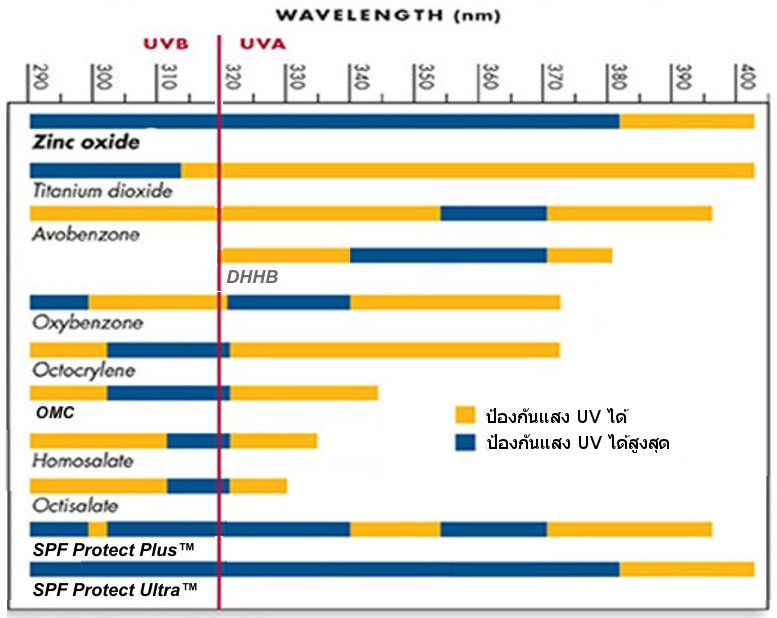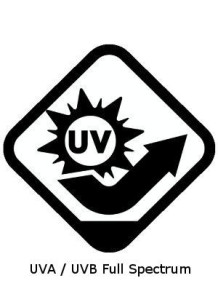Zinc Oxide (40nm, Triethoxycaprylylsilane Coated)
- Product Code: 7956
Nano Zinc Oxide is a zinc Oxide powder that has been treated with Triethoxycaprylylsilane Suitable for most sunscreen formulas. When compared with other types of Zinc Oxide.
- -
- -
- -
- -
- -
- -
- -
- -
- -
- -
- -
- -
- -
- -
- -
- -
- -
- -
| Test Name | Specification |
|---|---|
| Loss on ignition | 1.0% Max |
| Arsenic (As) | 6ppm Max |
| Lead (Pb) | 10ppm Max |
| Assay (%) | 98.0-102.0 |
| Cadmium (Cd) | 10ppm Max |
| Loss on drying (%) | 1.0 Max |
| Loss on ignition (%) | 2.0 Max |
| Residual Solvent (Ethanol) | 5000ppm Max |
| Mean Particle Size (micron) | 0.2 Max |
| Appearance | White powder |
Zinc Oxide (40nm, Triethoxycaprylylsilane Coated) is a zinc Oxide powder that has been treated with a coating. Triethoxycaprylylsilane To be able to spread easily and completely in the silicone. For use as a Physical Sunscreen And can be spread easily in the powdery texture Or oil For making makeup such as Mineral Makeup, Foundation Powder, Lipstick.
The Nano type differs from the conventional Zinc Oxide in that it is easily and completely dispersed so that Zinc Oxide particles are distributed in the formulation. Does not precipitate even in a liquid sunscreen formula. Perfect dispersion provides the most effective protection against UVA / UVB light.
Nano type differs from Zinc Oxide 200nm. EasyDisperse is the particle size smaller than 200nm, resulting in less whiteness. Suitable especially for sunscreen formulas.
The advantages of Physical Sunscreen: Less likely to clog pores Chemical Sun Screen And has a higher security Chemical Sun Screen As there are no ingredients that will penetrate the skin Physical Sun Screen It only serves to cover the skin so it does not allow UVA / UVB to directly affect the skin.
Cons of Physical Sunscreen: Since it is a powder that covers the skin from UVA / UVB light, it can easily be hit on the skin. Therefore, it tends to make the surface more shiny or flickering when used. The small particle size (nano particle) reduces this flickering but still fights. Chemical Sun Screen Not that doesn't cause luster / shine.
The difference between Titanium Dioxide and Zinc Oxide: Both ingredients It acts as a protection against UV light at different wavelengths. Titanium Dioxide can protect both shortwave UVA and long wavelength UVB while Zinc Oxide can protect against long wavelength UVA. In the formula of sunscreen Therefore, both ingredients should be used. This is because it can cover all UVA / UVB wavelengths completely.

The company sells 4 types of Zinc Oxide.
1. Zinc Oxide 200nm EasyDisperseTM 200nm powder type, silicone coated Makes it easy to spread in any sunscreen formula. Gives a soft feeling on the skin, adheres well, low whiteness
2. Zinc Oxide Micronized Uncoated powder type suitable for use in sterilizing formulas such as deodorants and not suitable for use in sunscreens. That requires high dispersion in order to achieve good sun protection performance
3. Liquid Zinc Oxide 35nm The particle size of the powder is 35 nm, ready to mix in any sunscreen formula, easy to use, feels soft on the skin, adheres to the skin well, does not cause whiteness on the skin.
4. Zinc Oxide Nano EasyDisperse ™ Powder type smaller than 200nm, silicone coated Makes it easy to spread in any sunscreen formula. Gives a soft feeling on the skin, adheres to the skin well, gives the lowest whiteness.
Recommendation for use in various products
Sunscreen products Who want to focus on sunscreen performance And does not have to cause white on the skin as an emulsion in the oil-in-water system used Zinc Oxide Nano EasyDisperse ™
Sunscreen products Who want to focus on sunscreen performance And does not have to cause white on the skin as an emulsion in the water-in-oil system used Liquid Zinc Oxide 35nm
Sunscreen products Who want to claim that non-nano Zinc Oxide, choose to use Zinc Oxide 200nm EasyDisperseTM
Diaper rash products, deodorant or deodorant / odor-equal, or sterile options are available. Zinc Oxide Micronized
The company offers a free SPF measurement service in case of being used. PMMA Booster In the formula to help boost the SPF / PA
Usage: For sun protection products Who want to focus on UVA
Mixing method: Spread to distribute in oil or silicone.
Rate of use: 1-25%
Product characteristics: White powder-light color
Solubility: Can be dispersed in oils and silicones
Storage: If you want to keep long-term Keep at room temperature Do not expose to sunlight, heat, seal the lid tightly, last at least 24 months.
INCI Name : Zinc Oxide, Triethoxycaprylylsilane
Be the first to review this product :-)
Example recipes using this ingredient:
- › lock_outlineABSOLUTE DAY CREAM
- › lock_outlineLORDINAIRE THE PROTECTOR
- › lock_outlineSun Protector Lifting Matte Primer SPF50 I
Recommend Lab-Service
| Lab Service | Price |
|---|---|
| SPF UVA, UVB measurement service (Boots Star/PA eq.) | ฿ 1,800.00 |
Nano Zinc Oxide is a zinc Oxide powder that has been treated with Triethoxycaprylylsilane Suitable for most sunscreen formulas. When compared with other types of Zinc Oxide.
Zinc Oxide (40nm, Triethoxycaprylylsilane Coated) is a zinc Oxide powder that has been treated with a coating. Triethoxycaprylylsilane To be able to spread easily and completely in the silicone. For use as a Physical Sunscreen And can be spread easily in the powdery texture Or oil For making makeup such as Mineral Makeup, Foundation Powder, Lipstick.
The Nano type differs from the conventional Zinc Oxide in that it is easily and completely dispersed so that Zinc Oxide particles are distributed in the formulation. Does not precipitate even in a liquid sunscreen formula. Perfect dispersion provides the most effective protection against UVA / UVB light.
Nano type differs from Zinc Oxide 200nm. EasyDisperse is the particle size smaller than 200nm, resulting in less whiteness. Suitable especially for sunscreen formulas.
The advantages of Physical Sunscreen: Less likely to clog pores Chemical Sun Screen And has a higher security Chemical Sun Screen As there are no ingredients that will penetrate the skin Physical Sun Screen It only serves to cover the skin so it does not allow UVA / UVB to directly affect the skin.
Cons of Physical Sunscreen: Since it is a powder that covers the skin from UVA / UVB light, it can easily be hit on the skin. Therefore, it tends to make the surface more shiny or flickering when used. The small particle size (nano particle) reduces this flickering but still fights. Chemical Sun Screen Not that doesn't cause luster / shine.
The difference between Titanium Dioxide and Zinc Oxide: Both ingredients It acts as a protection against UV light at different wavelengths. Titanium Dioxide can protect both shortwave UVA and long wavelength UVB while Zinc Oxide can protect against long wavelength UVA. In the formula of sunscreen Therefore, both ingredients should be used. This is because it can cover all UVA / UVB wavelengths completely.

The company sells 4 types of Zinc Oxide.
1. Zinc Oxide 200nm EasyDisperseTM 200nm powder type, silicone coated Makes it easy to spread in any sunscreen formula. Gives a soft feeling on the skin, adheres well, low whiteness
2. Zinc Oxide Micronized Uncoated powder type suitable for use in sterilizing formulas such as deodorants and not suitable for use in sunscreens. That requires high dispersion in order to achieve good sun protection performance
3. Liquid Zinc Oxide 35nm The particle size of the powder is 35 nm, ready to mix in any sunscreen formula, easy to use, feels soft on the skin, adheres to the skin well, does not cause whiteness on the skin.
4. Zinc Oxide Nano EasyDisperse ™ Powder type smaller than 200nm, silicone coated Makes it easy to spread in any sunscreen formula. Gives a soft feeling on the skin, adheres to the skin well, gives the lowest whiteness.
Recommendation for use in various products
Sunscreen products Who want to focus on sunscreen performance And does not have to cause white on the skin as an emulsion in the oil-in-water system used Zinc Oxide Nano EasyDisperse ™
Sunscreen products Who want to focus on sunscreen performance And does not have to cause white on the skin as an emulsion in the water-in-oil system used Liquid Zinc Oxide 35nm
Sunscreen products Who want to claim that non-nano Zinc Oxide, choose to use Zinc Oxide 200nm EasyDisperseTM
Diaper rash products, deodorant or deodorant / odor-equal, or sterile options are available. Zinc Oxide Micronized
The company offers a free SPF measurement service in case of being used. PMMA Booster In the formula to help boost the SPF / PA
Usage: For sun protection products Who want to focus on UVA
Mixing method: Spread to distribute in oil or silicone.
Rate of use: 1-25%
Product characteristics: White powder-light color
Solubility: Can be dispersed in oils and silicones
Storage: If you want to keep long-term Keep at room temperature Do not expose to sunlight, heat, seal the lid tightly, last at least 24 months.
INCI Name : Zinc Oxide, Triethoxycaprylylsilane
| Mechanism | - |
| Appearance | - |
| Longevity | - |
| Strength | - |
| Storage | - |
| Shelf Life | - |
| Allergen(s) | - |
| Dosage (Range) | - |
| Recommended Dosage | - |
| Dosage (Per Day) | - |
| Recommended Dosage (Per Day) | - |
| Mix Method | - |
| Heat Resistance | - |
| Stable in pH range | - |
| Solubility | - |
| Product Types | - |
| INCI | - |
Cart
No products



